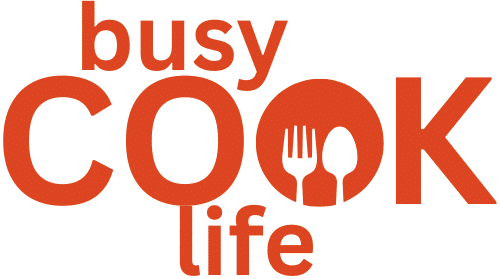Looking for a warm, cozy dessert without all the sugar? This article has your back. We’re diving into the sugar-free mug cake—a quick, single-serve treat that doesn’t sacrifice flavor for health. Whether you’re trying to cut back on sweeteners, cooking for someone with diabetes, or simply craving a better-for-you option, a sugar-free mug cake offers all the joy of dessert in a healthier package. In the next sections, we’ll cover how to make it, what sweetener alternatives work best, and tips to make it fluffy, moist, and satisfying—all in under five minutes.
If you’ve ever tried my keto mug cake or the gooey cookie dough mug cake, then you already know: deliciousness doesn’t require sugar. This guide to sugar-free mug cakes will walk you through recipes, science, substitutions, and smart kitchen hacks so you can master the mug cake that fits your lifestyle.
Table of Contents
Why Sugar-Free Mug Cakes Hit the Spot Fast
My First Sugar-Free Microwave Dessert (and the Toddler Who Approved)
Hey! I’m Emma, a 37-year-old home cook from Asheville, NC, here for all you busy bees who crave something warm, tasty, and made in a mug. My journey started with late nights, tight budgets, and a microwave I used more than my coffee maker. One failed pasta sauce (RIP saucepan) led me to the world of microwave mug meals—quick, creative, and shockingly satisfying. From banana pancakes in a mug to fudgy low-carb brownies, I’ve tried it all—sometimes with a toddler on my hip or a dog barking at shadows. Great food doesn’t need fancy tools—just curiosity, a microwave, and your favorite playlist.
The first time I made a sugar-free mug cake, I wasn’t even trying to eat healthier. I was out of sugar. I had a cranky toddler, two eggs, some almond flour, and a mission. To my shock, that little cocoa-rich cake turned out moist, fluffy, and sweet enough for both of us. The texture? Spot-on. The flavor? Subtle, but deeply chocolatey. And the kicker? My toddler gobbled it up. Since then, I’ve been tweaking that base recipe, learning what makes a sugar-free mug cake actually crave-worthy—not just edible.
What Makes a Mug Cake Sugar-Free and Still Tasty

So what is a sugar-free mug cake exactly? It’s a single-serving dessert made right in a mug—usually in the microwave—that skips traditional granulated sugar. Instead, it uses sugar alternatives like stevia, erythritol, monk fruit, or even mashed banana or applesauce to add sweetness. These swaps help make the recipe better for anyone watching carbs, reducing blood sugar spikes, or simply looking to feel good about dessert.
Most sugar-free mug cake recipes still follow the classic formula: flour (regular or alternative), egg or egg substitute, baking powder, fat (butter, oil, or nut butter), a liquid (milk, almond milk, water), and a sweetener. But it’s the balance that counts. Too much sweetener, and you risk bitterness. Too little fat, and you get dryness. That’s why testing is key—like in my raspberry white chocolate mug cake, where balance is everything.
And don’t assume sugar-free means boring. Some of my most popular recipes, like the keto mug cake or apple pie oatmeal mug, rely on minimal or zero added sugar and still satisfy major cravings. Sweeteners like monk fruit give you that sugary taste without the crash. Even a spoon of unsweetened cocoa or cinnamon can boost flavor naturally.
In fact, mug cakes are the perfect test lab. You’re only working with a few tablespoons of each ingredient, so it’s low risk to try new sugar alternatives. And the results? Often surprisingly rich, soft, and better-for-you. If you’ve had a long day and need dessert in five minutes flat, a sugar-free mug cake is your new best friend.
In the next section, I’ll walk you through choosing the best sweeteners, avoiding the bitterness trap, and building a cake that feels indulgent—but isn’t. We’ll also look at smart flour swaps and how to get that rise just right. And yes, you’ll find out which mug actually works best—because it makes a difference!
Craving more cozy desserts? Check out my apple pie mug cake or the classic snickerdoodle mug cake for more single-serve magic. Want more cozy dessert inspo? You’ll find dozens of microwaveable treats and creative sugar-free recipes on BusyCookLife’s Pinterest boards—all made for real life and real cravings.
Sugar-Free Substitutes That Actually Taste Good
Best Natural and Artificial Sweeteners
Let’s get real: not all sugar substitutes are created equal. Some taste great in drinks but fall flat in baking. When it comes to a sugar-free mug cake, the sweetener has to hold up under heat, blend smoothly into your batter, and most importantly—taste good. I’ve tested everything from stevia packets to monk fruit blends, and here’s what actually works for your next sugar-free mug cake.
Monk Fruit Sweetener is my personal go-to. It’s made from the extract of monk fruit and often blended with erythritol for bulk. It’s got a clean, non-bitter taste and measures well for baking. Plus, it held up beautifully in my pancake mug recipe without affecting the fluffiness or flavor of the sugar-free mug cake base.
Allulose is another star. It tastes like real sugar, bakes well, and doesn’t spike blood sugar. The downside? It’s a little pricey and can sometimes result in a softer texture—ideal for gooey cakes like my doughnut mug cake, or a moist sugar-free mug cake that feels like dessert, not compromise.
Then there’s Stevia. It’s natural, yes, but it’s tricky. On its own, stevia can leave a strong aftertaste. It works better when paired with another sweetener like erythritol. If you’re trying to go completely sugar-free and low-calorie, look for a stevia-erythritol blend labeled for baking and try it in a chocolate sugar-free mug cake.
If you’re out of sweeteners, don’t panic—unsweetened applesauce or ripe banana can work wonders. They add natural sweetness, moisture, and structure. I often use mashed banana in breakfast-style treats like my banana pancake mug, and yes, it doubles as a smart base for a quick sugar-free mug cake.
Flour and Fat Pairings for Texture
The second secret to a perfect sugar-free mug cake? Getting the flour and fat combo right. Sugar doesn’t just sweeten—it adds structure and tenderness. So when you take it out, you have to rebuild that balance with smart ingredients that add moisture and softness.
Almond flour is a top pick. It’s low-carb, rich in fat, and creates a moist, tender crumb. It pairs beautifully with coconut oil or butter. This combo made my keto mug cake a standout—rich, satisfying, and totally in line with a true sugar-free mug cake.
Coconut flour is another option but comes with quirks. It absorbs liquid like a sponge. Use it sparingly and increase eggs or milk. I suggest pairing it with olive oil or ghee. And don’t forget baking powder—it’s essential for a well-risen sugar-free mug cake.
If you’re using regular flour, combine it with avocado oil or nut butter for a soft finish. In richer recipes like my cookie dough mug cake, peanut butter adds body and flavor—perfect for customizing a decadent sugar-free mug cake.
With the right ingredients and balance, your sugar-free mug cake can go from bland to bakery-level delicious. Up next, we’ll get into microwave tricks—because yes, how you cook it really does matter.
Microwave Tricks for a Perfect Sugar-Free Mug Cake
Timing, Mugs, and Mixing
If your sugar-free mug cake ever turned out dry, rubbery, or weirdly tough, you’re not alone. Microwave cooking is fast—but it’s also unforgiving if you miss a step. The good news? With a few simple tweaks, you can get a warm, moist, perfectly cooked sugar-free mug cake in less than 90 seconds.
Start with the right mug. Choose one that’s wide, microwave-safe, and at least 12 ounces. This allows even cooking and prevents overflow. A too-tall, narrow mug leads to uneven heating, especially when using nut flours like in my plant-based mug dinners.
Next: don’t skip the mix. Whisk your dry ingredients together first—sweetener, flour, baking powder, cocoa or spices. Then add wet ingredients. Stir gently but thoroughly to avoid pockets of flour or clumps of almond butter. In a sugar-free mug cake, even mixing helps distribute the fat and keeps it moist throughout.
Microwave timing matters. Every microwave is different. Start with 60 seconds on high and add 10-second bursts until the center is just set. A perfect sugar-free mug cake should be soft and springy, with no wet batter on top. Slight undercooking is better than drying it out completely.
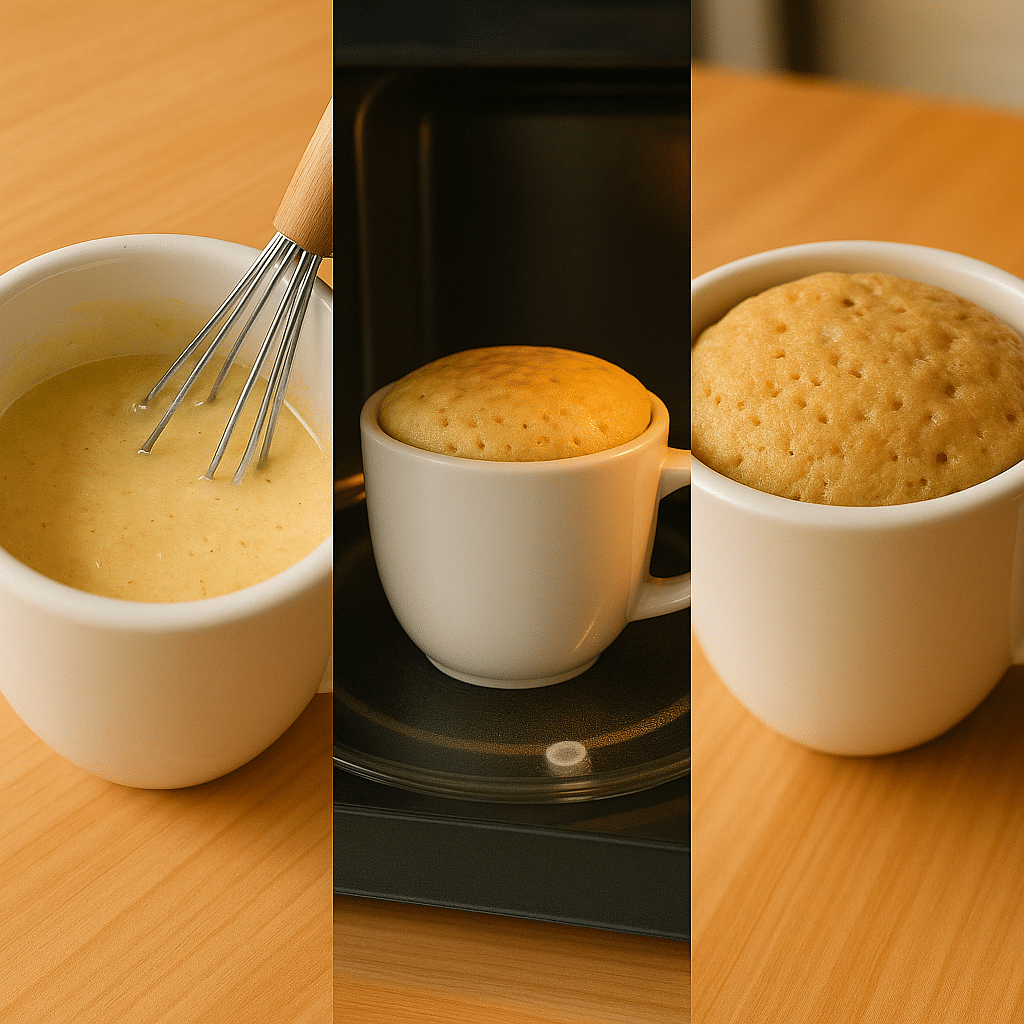
If your cake looks done but feels too firm after 90 seconds, let it sit. Residual heat will finish the job. This trick worked beautifully in my apple pie mug cake, where a 10-second rest made all the difference.
What to Avoid for Better Texture and Taste
Making a sugar-free mug cake can feel like baking science. You’re replacing sugar, which affects structure and caramelization, so balance is key. Here’s what to avoid to keep it fluffy, flavorful, and satisfying:
- Overmixing. Once your wet and dry ingredients meet, stir just enough to combine. Too much mixing knocks out air and leads to dense, gummy cakes.
- Skipping fat. Don’t reduce or omit the oil, nut butter, or butter in the recipe. Fat adds flavor and prevents a dry or chewy sugar-free mug cake.
- Too much flour. Especially with coconut or almond flour, don’t pack your measurements. Loosely spoon into a measuring cup and level with a knife. Over-measuring leads to dry, bland results.
Want bonus flavor? Try adding a splash of vanilla extract, a pinch of cinnamon, or a few sugar-free chocolate chips. I often do this in recipes like the snickerdoodle mug cake to add warmth and depth.
One final trick? Let it cool slightly. A sugar-free mug cake that rests for 2–3 minutes will settle, firm up, and become more flavorful as the steam redistributes. That’s when the magic really happens.
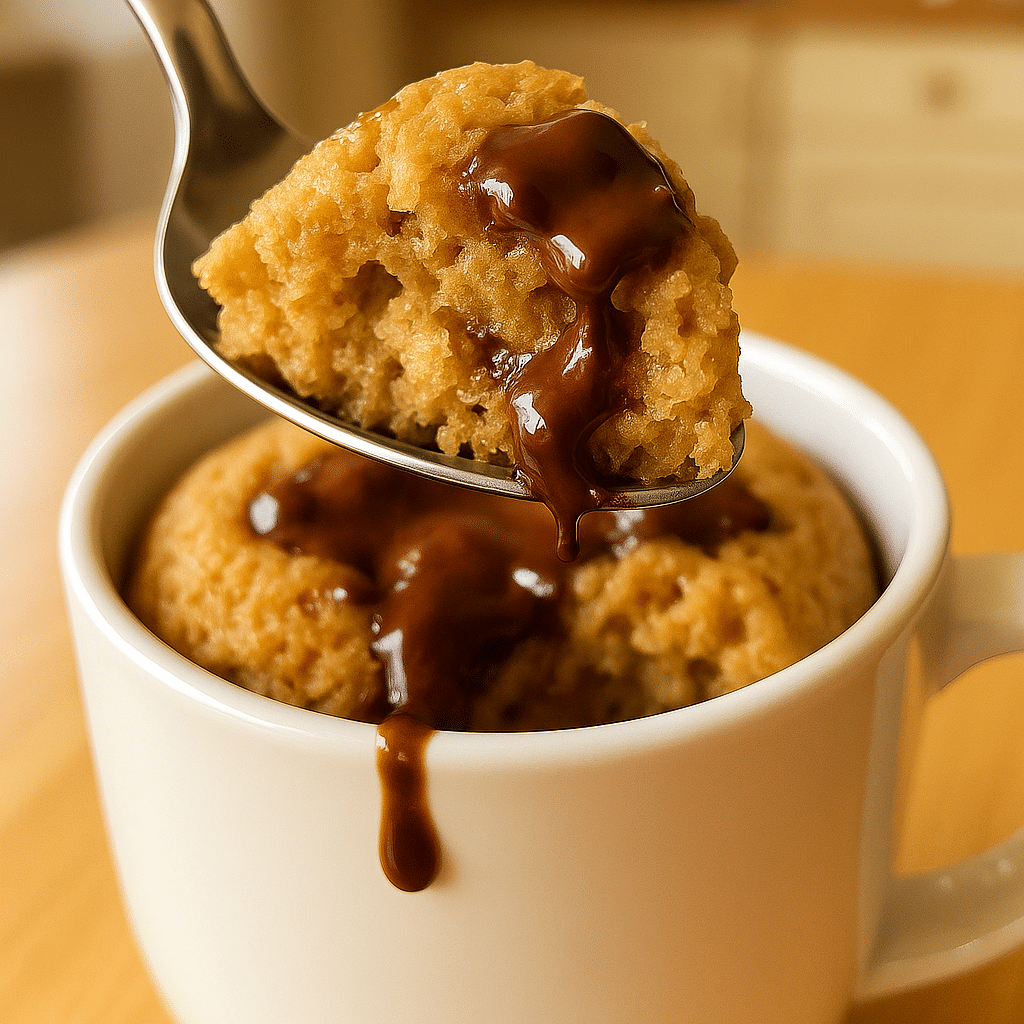
Now that you know how to cook it right, let’s answer the big questions—like which sweeteners are best for diabetics, and whether cake without sugar is really cake at all. We’ll wrap things up with a FAQ that clears the confusion and gives you practical confidence in your sugar-free kitchen skills.
Answering the Big Questions About Sugar-Free Mug Cake
Is Sugar-Free Cake Healthy for Everyone?
Let’s clear something up right away: a sugar-free mug cake can absolutely be part of a healthy lifestyle—but context matters. Just because it’s sugar-free doesn’t mean it’s automatically nutritious. What makes it better? The ingredients you choose. Natural sweeteners like monk fruit or allulose combined with almond flour and healthy fats can offer a balanced, lower-carb treat that supports blood sugar stability.
For those with diabetes, a well-formulated sugar-free mug cake is a smart choice—especially compared to store-bought options full of starch and preservatives. When I shared my version with a diabetic friend, her reaction was pure joy. It gave her a sense of indulgence without the spike. If you’re curious about more low-sugar ideas, try my plant-based mug dinners that focus on fiber and whole foods.
But sugar-free doesn’t mean calorie-free. Nut flours and sweeteners still add up. That’s why I suggest enjoying mug cakes as occasional treats—not breakfast replacements (unless you’re making my apple pie oatmeal in a mug with zero added sugar). The best part? You get full control. You know exactly what’s going into your mug and your body.
And for kids? With the right ingredients, a sugar-free mug cake can be a great after-school snack. My toddler now prefers my chocolate-almond version over anything store-bought. It’s soft, lightly sweet, and mess-free. That’s a parenting win in my book.
Sugar-Free Baking Myths—Busted
There’s a lot of misinformation floating around sugar-free baking. Let’s tackle the biggest myths head-on—because knowledge makes better cakes.
- Myth #1: Sugar-free means flavorless.
Not even close. When you use high-quality ingredients like cocoa, cinnamon, or vanilla, your sugar-free mug cake will taste rich and full-bodied. Just ask anyone who’s tried my raspberry white chocolate mug cake—flavor doesn’t need sugar. - Myth #2: You have to be keto to bake sugar-free.
Nope. While keto folks often go sugar-free, anyone can enjoy a sugar-free mug cake. Whether you’re watching carbs, avoiding artificial sweeteners, or just experimenting, it’s a flexible approach. Even my keto mug cake is adaptable to fit different diets. - Myth #3: Artificial sweeteners are all bad.
Not necessarily. Many sugar substitutes are FDA-approved and safe when used in moderation. Monk fruit, erythritol, and stevia blends can taste great and work well in a sugar-free mug cake without the unpleasant aftertaste—if you know how to balance them.
So yes, you can absolutely make a cake without sugar—and it can be moist, delicious, and satisfying. A sugar-free mug cake offers real comfort in a cup, especially when time is short and cravings hit hard. Whether you’re managing health goals or simply cutting back on refined sugar, this little treat has a big payoff.
To keep experimenting, explore my doughnut mug cake for a classic twist or revisit the cookie dough version when you want pure cozy joy—without the sugar crash.
Frequently Asked Questions
How to make mug cake with no sugar?
To make a sugar-free mug cake without added sugar, use a natural or artificial sweetener like monk fruit, erythritol, or a ripe banana. Mix it with flour, egg, baking powder, milk, and flavorings. Microwave for 60–90 seconds. This method also works great in low-carb recipes like my keto mug cake.
What to use instead of sugar in a mug cake?
You can use monk fruit, stevia-erythritol blends, or allulose for zero-calorie options. Natural alternatives include mashed banana or applesauce. Each works depending on your goals—calorie reduction, blood sugar control, or whole-food ingredients. Try banana in the banana pancake mug for sweetness and moisture.
Can diabetics eat sugar-free cake?
Yes, a well-prepared sugar-free mug cake using diabetic-friendly sweeteners like monk fruit or erythritol is a good option. Choose low-carb flours and healthy fats. Always check with a healthcare provider, but it’s a great alternative to store-bought desserts. See my apple pie oatmeal for a balanced option.
Can you make a cake without sugar?
Absolutely! A sugar-free mug cake uses sweeteners like stevia or monk fruit to replace sugar. You still get moisture, flavor, and a tender crumb—without refined sugar. Try my snickerdoodle mug cake to see how flavor can shine without sugar.
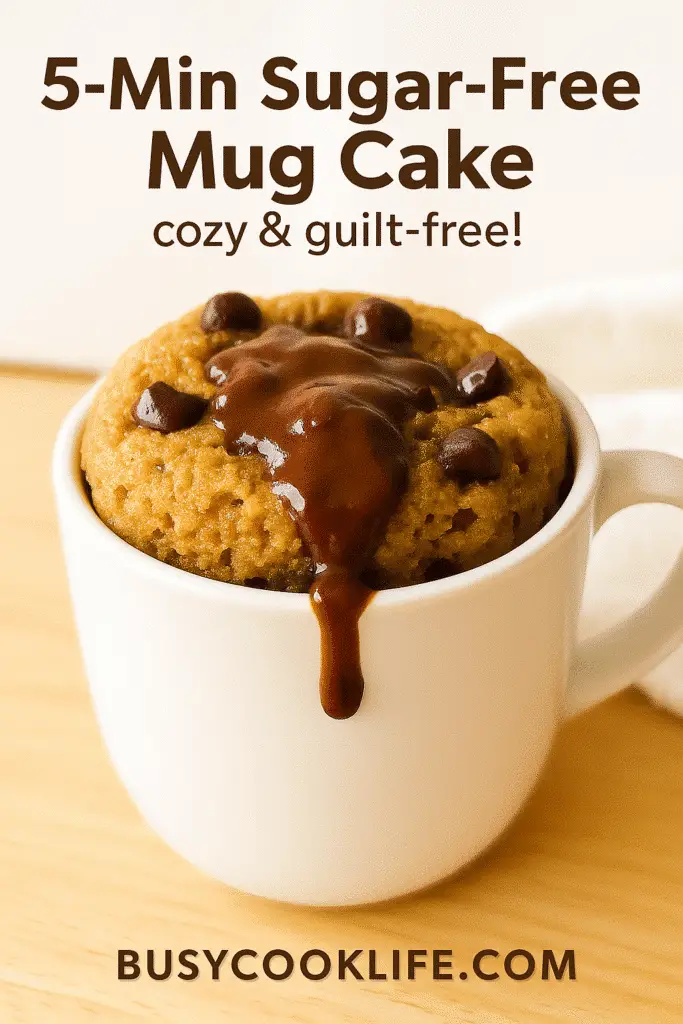
Conclusion
If you thought dessert had to mean sugar overload, think again. A sugar-free mug cake gives you all the cozy, sweet satisfaction in minutes—without the crash. With the right sweeteners, flours, and microwave tricks, this treat fits into your busy life, your health goals, and even your tightest cravings. From toddler-friendly banana cakes to chocolate-rich keto versions, there’s a mug cake for every mood and every mug.
Try one tonight, and don’t forget to check out more microwave magic on Busy Cook Life. Your microwave is calling—and your next favorite dessert might just be sugar-free. You can also follow along on Facebook @EverydayEatsWithEmma where I share quick kitchen wins, real-time tips, and behind-the-scenes mug cake experiments.
Print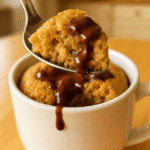
Sugar-Free Mug Cake That Actually Tastes Amazing
- Prep Time: 2 minutes
- Cook Time: 1 minute
- Total Time: 3 minutes
- Yield: 1 mug cake 1x
- Category: Dessert
- Method: Microwave
- Cuisine: American
Description
A soft, warm, sugar-free mug cake that satisfies sweet cravings in minutes without added sugar. Perfect for low-carb or diabetic-friendly diets.
Ingredients
3 tbsp almond flour
1 tbsp monk fruit sweetener
1/4 tsp baking powder
1 egg
2 tbsp unsweetened almond milk
1/4 tsp vanilla extract
Optional: pinch of cinnamon or 1 tsp cocoa powder
Instructions
1. Add almond flour, sweetener, and baking powder to a microwave-safe mug and stir.
2. Crack in egg, add almond milk and vanilla.
3. Mix well until smooth batter forms.
4. Microwave for 60–90 seconds, checking after 60 seconds.
5. Let rest 1–2 minutes before eating.
Notes
Microwave strength may vary; adjust time accordingly.
Use a wide mug (at least 12 oz) to prevent overflow.
Optional mix-ins: sugar-free chocolate chips, chopped nuts, cinnamon.
Nutrition
- Serving Size: 1 mug cake
- Calories: 220
- Sugar: 1g
- Sodium: 80mg
- Fat: 16g
- Saturated Fat: 3g
- Unsaturated Fat: 12g
- Trans Fat: 0g
- Carbohydrates: 6g
- Fiber: 2g
- Protein: 8g
- Cholesterol: 185mg
